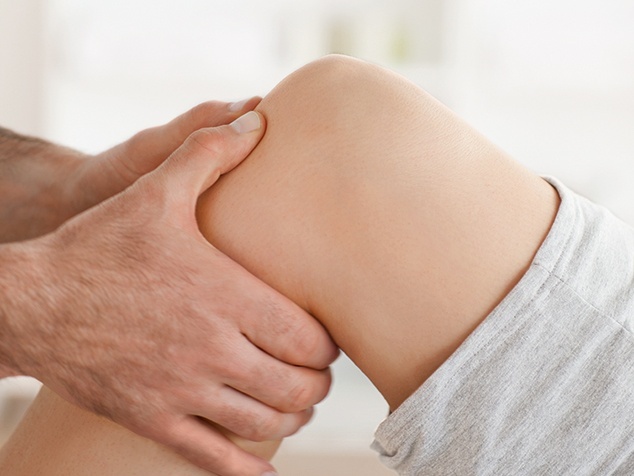Cruciate ligament rupture: Decision for surgery
Torn ACL: Treatment methods with and without surgery (2/3)
(Patient of Dr. med. Andreas Krüger in interview with Rosanna Di Bello @blog.hirslanden.ch)
"Torn ACL: I decided to have surgery"
Patient (37 years old), a sporty young mother of two sons, was about to teach her youngest son to ski when she fell in slow motion. She noticed immediately: There was something wrong with her knee. But the village doctor from the ski region assured her that everything was fine. 8 1/2 weeks later she decided to have the cruciate ligament operated. You can find out how it came about in the following interview.
What does freedom of movement mean to you?
Patient: Freedom of movement has always meant a lot to me. Until I was 19, I was in the junior skiing squad. I like to move around and I don't feel comfortable without regular sport.
How much exercise do you do?
Patient: During my career in the junior ski squad I trained either strength, endurance or speed five days a week. After my time in the squad I trained three times a week at home on my cross trainer. When the children came, two years followed in which I was no longer able to do sports as usual. But then the desire grabbed me again: cross-training at home, once a week on the tennis court and golfing every now and then. In winter I was found more regularly on the ski slopes again.
In the meantime I do strength exercises with my own body weight about three times a week instead of cross-training. The post-operative training after my operation has motivated me to do this.
You were in a skiing accident, what happened?
Patient: It happened on a family ski trip. My three-year-old son was wearing a so-called "Gstältli" and learned to ski. I held on to the straps and we went into a curve one after the other. My son fell and broke down. I was close behind him and braked abruptly. I caught the tip of my ski in the stem and it turned my right ski inwards. I felt a crack in my knee. I could already see myself lying on the operating table with a torn cruciate ligament and then limping around with crutches. After five minutes I gathered all my courage and stood up. Standing was possible without any problems. I had only slight pain. I just thought: Phew, lucky.
Were you transported directly to the emergency?
Patient: No, because I could still ski myself, we then went to the middle station in the ski area and took the chair lift to the valley station. To be on the safe side, I went to the village doctor and showed him my knee. But he more or less smiled at me and said that everything was fine. Relieved by his diagnosis, I went about my usual daily routine: playing tennis regularly and riding my bike to work. Although I was in slight pain, I didn't think anything of it.
After about two months of constant pain, I found the whole thing quite astonishing and went to a specialist to have my knee examined again. After a short examination of my knee, the diagnosis was clear for him, contrary to the village doctor's diagnosis: a torn anterior cruciate ligament. The very next day I had an MRI examination which confirmed his diagnosis.
What treatment have you had?
Patient: Dr. Krüger informed me very neutrally about the treatment options. I was uncertain whether I should decide for or against an operation. I expressed my concerns to Dr. Krüger and emphasized that it was important for me to be able to pursue my hobbies again without any problems, especially skiing and playing tennis. Dr. Krüger explained to me that in my case an operation was the better solution. Today I am sure that I have made the right decision.
How did you feel after the operation?
Patient: I had severe pain the first few days and found it very unpleasant that the knee could neither be straightened nor properly bent. In addition, I was often nauseous from the anesthesia and medication.
How long did the rehabilitation (splint fitting / physiotherapy) last?
Patient: On the second day after the operation I was able to get up again and go to the toilet on my own. From the first day on, I trained three times a day with the knee movement splint, the electrodes for muscle building and from the second day on, regular physiotherapy was added.
I wore the splint for about two months, it gave me a certain security. I went to physiotherapy once or twice a week for six months.
How long did it take to get them mobile again?
Patient: The swelling in the knee unfortunately did not go down as quickly as hoped. When we went on holiday to the sea six weeks after the operation, I was still using crutches and could not yet put full weight on them. The two weeks on the beach and the salt water did me good. When I returned to Switzerland, i.e. eight weeks after the operation, I was able to walk without crutches, put full weight on them and drive a car again without any problems.
Did you underestimate anything in the healing process?
Patient: The only difficulty was the demanding and strict physiotherapy, which I appreciated very much. I think the only reason I feel so well today is because my therapist regularly pushed me to my limits.


